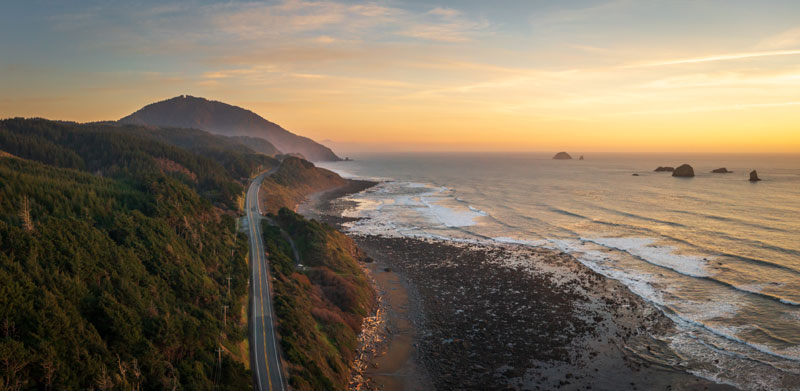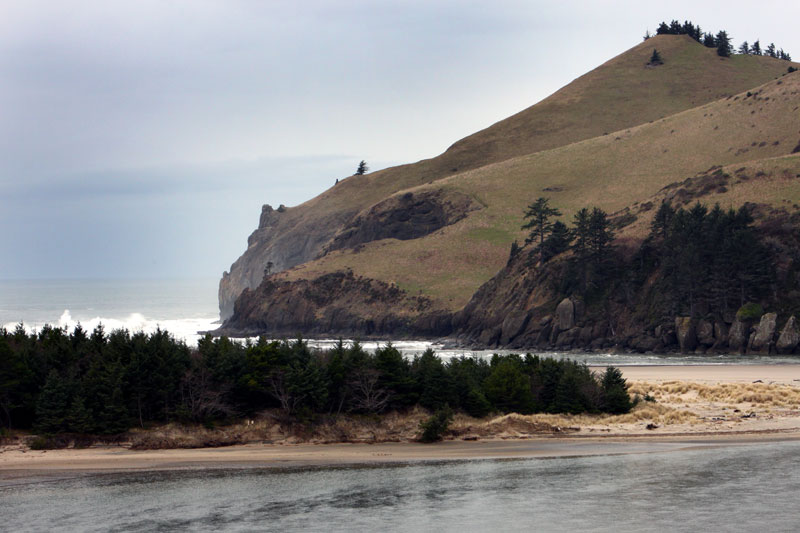Some Oregon Coast Areas Will Have Survey Takers, Asking What Visitors Know
Published 07/08/23 at 6:21 a.m.
By Oregon Coast Beach Connection staff

(Oregon Coast) – Nearly two dozen sites on the Oregon coast have researchers asking the pubic questions, checking into how much they know about Oregon's marine reserves. Staff from Oregon State University are now onsite at 23 parks, visitor centers or access points and will be through August. (Above the Cape Perpetua Marine Reserve. Photo Oregon Coast Beach Connection)
Includes exclusive listings; some specials in winter
In Cannon Beach:
Includes rentals not listed anywhere else
In Manzanita, Wheeler, Rockaway Beach:
Some specials for winter
In Pacific City, Oceanside:
Some specials for winter
In Lincoln City:
Some specials for winter
In Depoe Bay, Gleneden Beach:
Some specials for winter
In Newport:
Look for some specials
In Waldport
Some specials for winter
In Yachats, Florence
Some specials for winter
Southern Oregon Coast Hotels / Lodgings
Reedsport to Brookings, places to stay; winter deals
OSU researchers will be asking visitors various questions about the science of the five marine reserves and what they know of these important areas, including whether their visits will help foster a change in habits needed to curb climate change.
Many of these survey sites are right at those marine reserves.
Look for two different kinds of interviewers, Oregon Department of Fish and Wildlife (ODFW) said.
“[They will] be asking random visitors questions focused on education outreach about ocean acidification and whether visiting the ocean can trigger personal changes to reduce global warning's impacts such as ocean acidification,” ODFW said.
Participants will also get questions about how much they know about the marine reserves.
What is called an “intercept survey” takes about five minutes or less and is very low-pressure.

Cape Falcon area - Cape Falcon Marine Reserve is here (photo Oregon Coast Beach Connection)
“We go out of our way to avoid intrusion with people’s recreational experiences,” said Tommy Swearingen, the Human Dimensions program leader for the Oregon Marine Reserves Program who is helping in the study.
The goal of the study is to talk to at least 1,600 Oregon coast visitors, but Swearingen believes there should be well over 2,500.
Ocean Acidification, sometimes referred to as OA, is the byproduct of increased carbon dioxide dissolved in sea water over the past two centuries. It triggers chemical reactions that make sea water more acidic, impacting the entire ocean food web from fish and shellfish.
“Climate change is happening in everybody’s backyard and it’s happening globally,” says Dr. Megan Jones, the OSU conservation social scientist overseeing the study by master’s degree student Jennifer Waldo. “You don’t see OA with your naked eye, but it’s effecting local marine life and industries. Maybe this will make something abstract feel more relevant to people.”
By adding this relevancy, researchers hope to gauge whether this spurs interviewees to make lifestyle changes that reduce their carbon footprint.
The results will be matched with online surveys of about 1,400 Oregonians concluded this past spring.
Results are expected later this year.
Enacted by the Oregon Legislature in 2009, the Marine Reserves Program includes five actual marine reserves and nine protected areas that together cover nine percent of Oregon’s near-shore ocean waters. The reserves, where no plants or animals can be removed and where development is banned, are underwater listening stations tracking ocean changes including fish, invertebrate and algal communities. It is the first long-term nearshore ocean conservation and monitoring program run by the state of Oregon and includes cutting-edge research on the economic, social and cultural dynamics of the Oregon coast and coastal communities. The program is funded through state general fund dollars and not sport or commercial fishing fees. Oregon Coast Hotels in this area - South Coast Hotels - Where to eat - Maps - Virtual Tours
Cannon Beach Lodging
Nehalem Bay Lodgings
Manzanita Hotels, Lodging
Three Capes Lodging
Pacific City Hotels, Lodging
Lincoln City Lodging
Depoe Bay Lodging
Newport Lodging
Waldport Lodging
Yachats Lodging
Oregon Coast Vacation Rentals
Oregon Coast Lodging Specials

Redfish Rocks Marine Reserve - courtesy Manuela Durson - see Manuela Durson Fine Arts for more

Near Lincoln City, Cascade Head and the Cascade Head Reserve, Oregon Coast Beach Connection
More About Oregon Coast hotels, lodging.....
More About Oregon Coast Restaurants, Dining.....
 Andre' GW Hagestedt is editor, owner and primary photographer / videographer of Oregon Coast Beach Connection, an online publication that sees over 1 million pageviews per month. He is also author of several books about the coast.
Andre' GW Hagestedt is editor, owner and primary photographer / videographer of Oregon Coast Beach Connection, an online publication that sees over 1 million pageviews per month. He is also author of several books about the coast.
LATEST Related Oregon Coast Articles
Atmospheric river again for Washington, Oregon and rain for a week. Weather
Oregon Coast's Rogue Ales Abruptly Closes All Operations - Newport, Portland,...
Over 60 people now unemployed. Company owed 100s of thousands in taxes, rent. Salem, Monmouth, restaurant reviews
Oregon and Coastal Parks' Projects A Mix of Good and Bad Budget News
Several updates finished but some shelved for future. Astoria, Warrenton, Oceanside, Newport, Salem, Silverton, Eastern Oregon, Prineville, Nehalem
Reports of Bird Flu in Washington, Oregon Include Coastlines: States Issue Ad...
One large-scale report from Long Beach still to be determined. Marine sciences
Oregon Coast's OR229 Shut Down Indefinitely by Severe, Chasm-like Landslide
Video: ODOT said it could be months - or longer. Rural road between Depoe Bay, Newport. Weather, traffic
Central Oregon Coast's Glass Float Drops Mellow a Bit: Special Drop Dates Few...
Bringing the Lincoln City events back to their roots
What's Up (and Not Up) for King Tides on Oregon / Washington Coast This Week
No large wave events but some flooding, caution needed still
Floating Beacons of the N. Oregon Coast: Astoria's Lightship Columbia History...
History and Hops in Seaside looks to the lightship on Dec 18. Seaside events
Back to Oregon Coast
Contact Advertise on Oregon Coast Beach Connection
All Content, unless otherwise attributed, copyright Oregon Coast Beach Connection. Unauthorized use or publication is not permitted



















































